We use information collected through cookies and similar technologies to improve your experience on our site, analyze how you use it and for marketing purposes.
Your privacy settings
We and our partners use information collected through cookies and similar technologies to improve your experience on our site, analyze how you use it and for marketing purposes. Because we respect your right to privacy, you can choose not to allow some types of cookies. However, blocking some types of cookies may impact your experience of the site and the services we are able to offer. In some cases, data obtained from cookies is shared with third parties for analytics or marketing reasons. You can exercise your right to opt-out of that sharing at any time by disabling cookies.
Manage Consent Preferences
Necessary
Always ON
These cookies and scripts are necessary for the website to function and cannot be switched off. They are usually only set in response to actions made by you which amount to a request for services, such as setting your privacy preferences, logging in or filling in forms. You can set your browser to block oralert you about these cookies, but some parts of the site will not then work. These cookies do not store any personally identifiable information.
Analytics
These cookies and scripts allow us to count visits and traffic sources, so we can measure and improve the performance of our site. They help us know which pages are the most and least popular and see how visitors move around the site. All information these cookies collect is aggregated and therefore anonymous. If you do not allow these cookies and scripts, we will not know when you have visited our site.
Embedded Videos
These cookies and scripts may be set through our site by external video hosting services likeYouTube or Vimeo. They may be used to deliver video content on our website. It's possible for the video provider to build a profile of your interests and show you relevant adverts on this or other websites. They do not directly store personal information, but are based on uniquely identifying your browser and internet device. If you do not allow these cookies or scripts it is possible that embedded video will not function as expected.
Google Fonts
Google Fonts is a font embedding service library. Google Fonts are stored on Google's CDN. The Google Fonts API is designed to limit the collection, storage, and use of end-user data to only what is needed to serve fonts efficiently. Use of Google Fonts API is unauthenticated. No cookies are sent by website visitors to the Google Fonts API. Requests to the Google Fonts API are made to resource-specific domains, such as fonts.googleapis.com or fonts.gstatic.com. This means your font requests are separate from and don't contain any credentials you send to google.com while using other Google services that are authenticated, such as Gmail.
Marketing
These cookies and scripts may be set through our site by our advertising partners. They may be used by those companies to build a profile of your interests and show you relevant adverts on other sites. They do not store directly personal information, but are based on uniquely identifying your browser and internet device. If you do not allow these cookies and scripts, you will experience less targeted advertising.
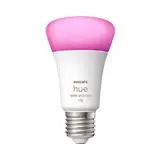
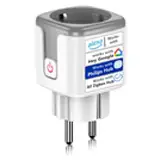
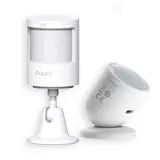
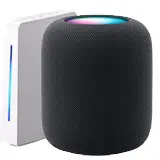
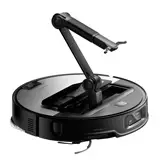

How to control your home's temperature remotely
Imagine coming home after a long day and finding the perfect temperature, regardless of the weather outside. Sound like science fiction? Not anymore. Controlling your home's temperature remotely is an affordable reality that offers convenience, energy savings and greater control over your environment. Why control ...
Why control the temperature of your home remotely?
The benefits are many. From comfort to savings, remote temperature control transforms the home living experience.
Personalized comfort
Adjust the temperature to your liking before arriving. Forget about walking into a freezing house in winter or sweltering in summer. Adjust the temperature to be just right when you arrive.
Significant energy savings
Avoid wasting energy by programming the temperature when you are not at home. Significantly reduce your energy bills by adjusting your heating or air conditioning only when necessary. Don't heat or cool an empty house.
Greater control and flexibility
Control the temperature from anywhere with an internet connection. Ideal if you have pets that need a controlled environment, or if you simply want to make sure your home is ready for an unexpected visitor. Have the power in your hands, no matter where you are.
Consumption monitoring
Some systems allow you to monitor energy consumption, helping you to identify areas for improvement. Know your consumption habits and adjust your scheduling to optimize energy use and reduce costs.
How to control the temperature of your home remotely?
There are several options to achieve this control, from simple solutions to more complex and integrated systems.
Smart thermostats: the most popular choice
Smart thermostats are devices that connect to your Wi-Fi network and allow you to control the temperature from your smartphone, tablet or computer. They are easy to install and configure, and offer a wide variety of functions.
Home automation systems (Domotics)
Home automation offers a more complete solution, integrating temperature control with other home functions such as lighting, security and entertainment. If you are looking for a complete smart home, this is the best option.
Intelligent air conditioning
Some manufacturers offer air conditioners with built-in Wi-Fi connectivity, allowing you to control them directly from your smartphone. This is an excellent option if you only need to control the air conditioning and do not want to invest in a smart thermostat.
Intelligent heating
Similar to air conditioning, there are heating systems, such as radiators or boilers, that offer remote control through applications. Ideal for optimizing heating use and avoiding energy waste.
Choosing the right system: factors to consider
Choosing the ideal system will depend on your needs, budget and personal preferences. Here are some key factors to consider:
Compatibility with your heating/cooling system
Make sure the system you choose is compatible with your existing heating and cooling system. Not all smart thermostats are compatible with all systems. Please check compatibility before purchasing.
Budget
Prices for remote temperature control systems vary considerably. Define a budget and look for options that fit within it. Remember that the initial investment may be offset by long-term energy savings.
Ease of installation and use
If you are not a technology expert, choose a system that is easy to install and use. Many smart thermostats are designed for easy user installation. If you are not comfortable, consider hiring a professional.
Additional features
Consider the additional features offered by each system. Do you need voice control? detailed consumption reports? integration with other devices? Choose a system that meets your requirements.
Security and privacy
Make sure that the system you choose offers good security and privacy measures. Research the manufacturer's privacy policies and choose a system that protects your personal data.
Recommendations and best practices for remote temperature control
To get the most out of your remote temperature control system and maximize energy savings, follow these recommendations:
Intelligent programming
Create personalized schedules that fit your daily routine. Reduce the temperature when you are not at home and adjust it to be comfortable when you arrive. Use the geolocation function if available.
Optimizes sensor placement
Place temperature sensors in strategic locations to obtain accurate readings. Avoid locating them near heat sources or air currents. Accuracy is key to efficient control.
Take advantage of comfort zones
If your system allows it, create comfort zones in different areas of your home. Heat or cool only the areas you are using, rather than the entire house. This can save a lot of energy.
Regular maintenance
Perform regular maintenance on your heating and cooling system. Clean filters and check connections to make sure everything is working properly. A well-maintained system is more efficient.
Monitor your energy consumption
Use your system's monitoring functions to identify areas for improvement. Analyze your consumption patterns and adjust your scheduling to optimize energy use. Knowledge is power.
Keep software up to date
Keep the software of your smart thermostat or home automation system up to date. Updates usually include security enhancements, new features and bug fixes.
Leverages integration with other smart devices
If you have other smart devices in your home, such as motion sensors or automated blinds, integrate your temperature control system with them. This can create an even more automated and efficient environment.
Practical examples of energy savings with remote temperature control
Let's look at some concrete examples of how you can save energy by using remote temperature control:
The future of temperature control in the home
Home temperature control technology is constantly evolving. In the future, we can expect to see:
Increased integration with renewable energies
Systems that integrate with solar panels and other renewable energy sources to optimize energy use and reduce dependence on the grid.
More advanced artificial intelligence
Thermostats that learn from your habits and preferences, adjusting the temperature automatically without the need for manual programming.
Increased focus on health and wellness
Systems that take into account factors such as humidity and air quality to create a healthier and more comfortable environment.
Increased security and privacy
Stronger security protocols to protect your personal data and prevent unauthorized access to your system.
Conclusion: Take control of your comfort and save energy
Controlling your home's temperature remotely is a smart investment that offers comfort, energy savings and greater control over your environment. Whether you choose a smart thermostat, a home automation system or an air conditioner with Wi-Fi connectivity, the options are many and suit different needs and budgets. Start exploring the possibilities today and transform your home into a more comfortable and efficient space. Share this article with your friends and family so they can also benefit from the advantages of remote temperature control.
Related Posts
Smart thermostats: how to save up to 30% on heating
Tired of sky-high heating bills that make you shiver more than winter? There's a smart solution that might be waiting for you: the smart thermostat. Not only does it let you control your home's temperature from anywhere, but it can also help you save up to 30% on your heating costs. Find out how…
Smart blinds vs. motorized curtains: which option is better?
Tired of getting up to adjust your curtains or blinds? Home automation offers you stylish and practical solutions. Two of the most popular options are smart blinds and motorized shades. But which one is best for you? This article will walk you through the key differences, advantages and disadvantages, and ...
What are the safest smart heaters for children?
Worried about keeping your kids warm this winter? That's normal! But safety comes first, especially when we're talking about heaters. Finding a safe smart heater for kids may seem complicated, but don't worry, we're here to help. We'll explore the best options, safety features and tips to keep your home warm ...
How to choose a smart air conditioner or convert a regular one?
Tired of the sweltering summer heat? Dreaming of controlling your home's temperature from your smartphone? The good news is that you can enjoy a cool, connected environment even without spending a fortune on a brand new air conditioner. In this article, we'll walk you through a step-by-step guide to choosing the smart air conditioner ...